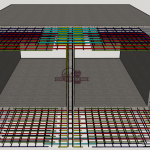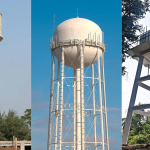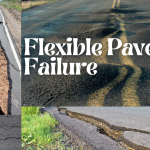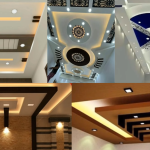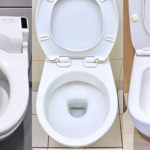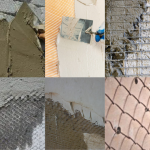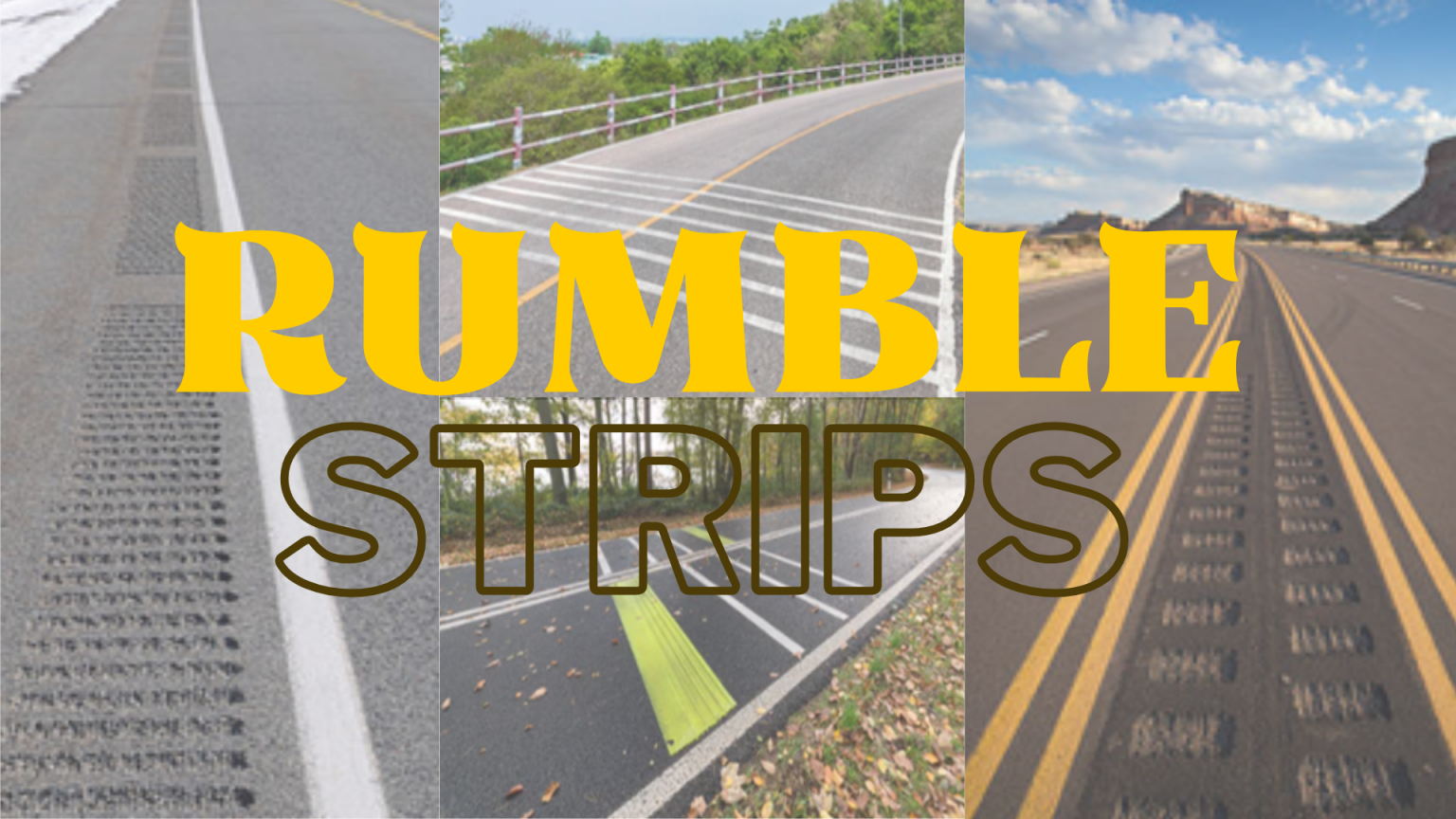
Rumble strips (also known as alert strips or sleeper lines) are a road safety precaution that alerts inattentive drivers of a possible hazard by causing a tactile vibration and audible rumbling that is transmitted into the vehicle interior via the wheels. A rumble strip is used to alert drivers when they drift from their lane by running parallel to an edge line or centerline. A rumble strip can also be installed in a row across the direction of travel to warn drivers of an impending stop or slowdown or of an approaching hazard spot.
Rumble strips are an effective measure for reducing roadside accidents. Rumble strips’ noise and vibration warn drivers when they deviate from the traveled path. Rumble stripes are rumble strips that have been painted with a retroreflective coating to improve visibility of the pavement edge at night and during inclement weather.
Also, Read: Super elevation | Traffic Management | Pavement Markings |Road Signs
Rumble Strips Placement
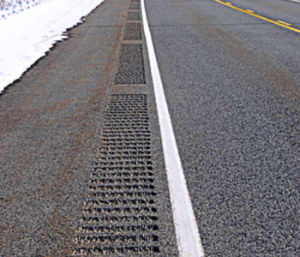
Road shoulders – Shoulder rumble strips are installed outside of the edge line and are longitudinal rumble strips (the white or yellow line that separates the travel lane from the left or right shoulder). Shoulder rumble strip are intended to alert inattentive drivers that they are leaving the roadway, with the goal of reducing run-off-the-road accidents. They are also useful in snowy conditions to assist the driver in keeping on the road.
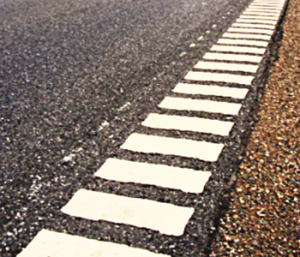
Edge line– are an adaptation of shoulder rumble stripes that embed pavement markings inside the rumble strip, enhancing its visibility. On roads with narrow shoulders, these are more commonly used.
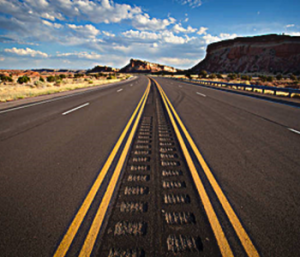
Centerlines – are primarily used to alert drivers whose vehicles are crossing center lines on two-lane, two-way roads. They are an effective countermeasure to reduce head-on collisions and opposite-direction sideswipes (often referred to as “cross-over” or “cross-center line” crashes).
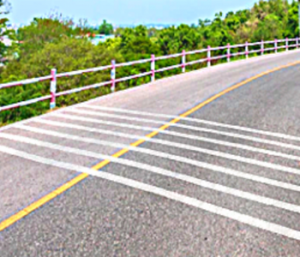
Middle of the lane -are used to warn drivers of the need to slow down or stop, as well as other upcoming changes that an inattentive driver may not notice. These rumble strips are installed perpendicular to the direction of travel in the travel lane. This is typically found on approaches to intersections, horizontal curves, toll plazas, and work zones.
TYPES OF RUMBLE STRIPES
1. Milled rumble strips
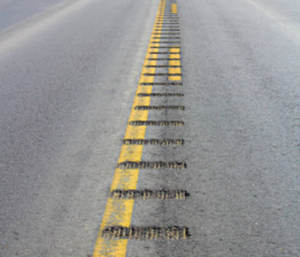
A milled rumble strip is created in the asphalt pavement using a milling machine that creates uniform grooves and depressions. The milled rumble stripes may come in a variety of sizes, according to studies. They all produce varying amounts of vibration and sound in the vehicle. It occurs when a vehicle’s tires enter the grooves of the strips.
It is believed that deeper and wider strips cause more noise and vibration in the car, and vice versa.
Milled rumble strips are also thought to produce the most vibration and sound in the passenger compartment of any type of rumble strip.
Milled rumble strips are typically 5 to 7 inches long and 0.5 inches deep.
They are typically spaced at 10-inch intervals. They are manufactured on existing concrete roads.
Even though these strips are very effective in most cars, they do not make enough noise in large trucks to wake up a drowsy driver.
2. Rolled rumble strips
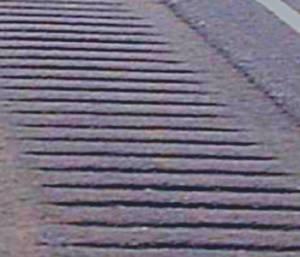
Rolled rumble strips can be round or V-shaped. They are created during road construction by pressing a shaped groove into the asphalt pavement or shoulder.
Unlike milled-in strips, rolled-in strips are formed on freshly laid asphalt pavement when it is moldable.
The amount of vibration and sound produced by rolled rumble stripes varies depending on their dimensions.
Regardless of size, they produce less noise and vibration in vehicles than milled rumble strips, making them less effective.
3. Raised rumble strips
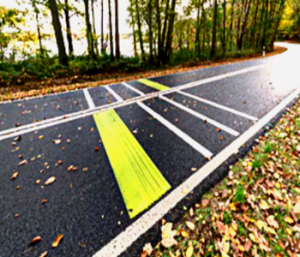
As the name suggests, this type of rumble stripe differs from the first two types in that it has a raised surface.
They can have a round or a rectangular shape. They can also be used on both old and new pavement.
Raised markers and sometimes raised buttons are used to create this type of rumble stripe.
They are typically available in fluorescent, yellow, and white colors.
They can range in height from 6 to 13 mm. Rumble strips are commonly used in warmer climates where snow does not cover the roads.
4. Formed rumble strips
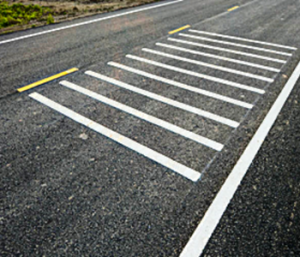
Rumble stripes that have been formed resemble rolled rumble strips in many ways. However, the application procedure is where they diverge most.
Rumble strips are formed by placing forms on the concrete shoulders while they are warm, fresh, and being built.
On the other hand, rolling rumble strips are installed over existing, hard asphalt pavement.
Rumble stripes can be rounded or V-shaped. The majority of the rumble strips that have been formed are 44 mm wide and 32 mm deep.
These dimensions are not limited, but they do vary depending on a variety of factors.
RUMBLE STRIPS DEVICE DIMENSIONS
Rumble strips come in varying dimensions. In order to properly understand their dimensions, you should be familiar with the following terms:
- Width: This specifies the width of the strip. It is measured parallel to the roadway’s travel lane.
- Length: This is also known as transverse width. It is the length lateral to the travel lane that is measured or checked.
- Depth: This indicates how deep the depression or groove on the pavement is. It is calculated as the distance from the pavement’s surface to the groove’s bottom.
- Offset: This is the distance between the travel lane and the rumble strips. It is calculated by measuring the distance from the inside edge of the strip to the outside edge of the travel lane.
- Spacing: This metric displays the distance between adjacent rumble strips.
BENEFITS OF RUMBLE STRIPS DEVICE
- These strips make the road’s edges and center more visible even when there are no traffic lights.
- Rumble strips warn sleepy drivers about approaching dangers and hazards.
- When traveling on high-speed roads, they are also known to slow down their vehicles as they approach intersections.
- These sleepy bumps warn distracted drivers and help prevent various types of crashes that occur on high-speed roads.
- They give drivers time to slow down and reduce the severity of a crash.

